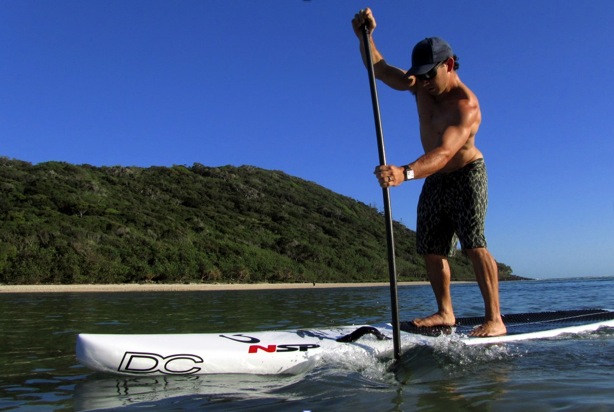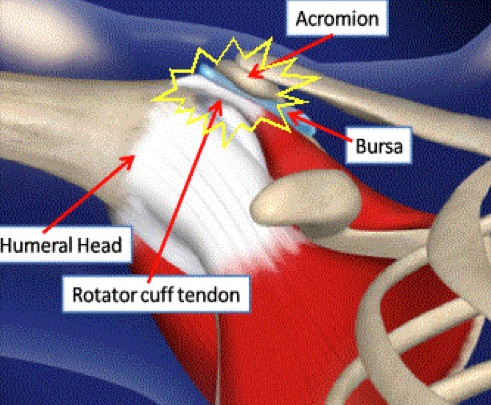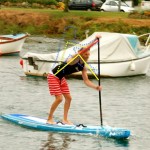
Nobody wants to be injured, unable to paddle, in pain, or have to go through a lengthy rehabilitation process. When it happens these problems can take even the toughest individuals through a spectrum of emotions, and ultimately stop you from doing what you enjoy. If you are a competitive racer, training towards a personal goal, a cruiser, or just want to surf… injuries can have a seriously negative impact.
Injuries come with the territory in sport. In fact, whilst you are reading this I’m sure you can recall a point in your life where you have had an injury that has stopped you in your tracks? SUP is no different to any other sport… all the repeated bending forwards, excessive forces through shoulders, fixed leg positions, not to mention the repetitive load through the forearms and hands, can all lead to problems. If you throw in the unpredictability of ocean paddling and surfing it can be a risky business.
The nature of SUP as a competitive sport also lends itself to pushing the body beyond the normal realms of comfort. Whether this is hacking out massive turns when surfing, or grinding out long powerful strokes in a distance race, sometimes something has to give. Personally, pushing my body to the limit is part of the challenge and is one of the reasons I enjoy it so much. Having said that, any sensible person would draw the line there, and not want any lasting complications.
In the next few articles I hope to go through some of the most common injury problems SUP boarders might encounter… starting with…
The shoulder
I would be very surprised if there are any semi-serious paddlers reading this who haven’t endured some form of shoulder pain. There are many causes of shoulder pain and the shoulder itself isn’t in fact one joint, it is a “complex” comprising of several joints.
The shoulder is an unusual joint because it sacrifices stability for mobility. In fact, the shoulder complex has a much bigger range of movement than all other joints in the body. In order to lift your arm up above your head you need movement of your glenohumeral joint (the ball and socket joint), but you also need the scapular (shoulder blade) to move. The rhythm of movement between these joints is an important factor in preventing injury.
Impingement
In my experience the most common cause of shoulder pain in SUP is sub acromial impingement. This is an umbrella term used to describe an irritation between the humeral head and the acromion process. There are several structures in this small space that can become irritated or inflamed by the squashing process that occurs when you lift your arm and apply force through the end of the lever (your top hand on the paddle).

The most common structures that are likely to get injured are the rotator cuff tendons themselves, (attach muscle to bone and provide stability) and the sub acromial bursa (fluid filled sack which stops friction between tendons and bones). These structures can become irritated and inflamed, which leads to pain.
How does it happen?
Some of the main causes of sub- acromial irritation in paddling are paddle length, technique, muscle fatigue and muscle imbalance. So it’s important to consider these factors to reduce the risk of this kind of pain literally grinding you to a halt. With shoulder impingement, most people complain of pain lifting their arm above shoulder height, which relates to your top hand when paddling.
The finer details of shoulder impingement (and shoulder injuries in general) are very intricate, complicated and in all honesty if you have a shoulder injury you probably need to see a Physiotherapist who can examine the shoulder complex properly to get an accurate diagnosis and treatment plan in place.
Having said this there are 5 simple things you can do to help reduce the risk of it happening in the first place:
1. Try and keep your elbow below shoulder height whilst paddling. Anatomically it’s usually beyond 90 degrees of shoulder elevation (shoulder height… accounting for forward bending at the waist) that this kind of pinching will take place.
The angle of the right shoulder is a classic example of bad technique, which will lead to shoulder impingement. The elbow (red line) is MUCH higher than 90 degrees (in yellow) and being used as the hinge point. The dotted lines show a better position less likely to cause shoulder injury.
2. Have a think about your paddle length. There are loads of good articles out there debating the best length of paddle, and some of them take anatomical theory into account, some don’t. I’m not an expert in coaching paddle technique (in fact our team coach thinks my technique needs improvement). But the point is that if your paddle is too long… you are going to irritate the sub acromial space, which will lead to impingement, pain and being unable to paddle.
3. Don’t just work on the muscles needed for paddling. This can lead to imbalance, instability and increase risk of injury. Shoulder stability exercises are something I may cover in future articles. In the meantime have a look at the following video for some ideas for some basic stability exercises.
4. Maintain form when fatigued. This is far easier said than done. Most commonly you see paddlers at the end of a long paddle or race, when fatigue hits, hinging at the shoulder where gravity and the larger trunk muscles do all the work. Worst-case scenario is that the repeated irritation will lead to a frayed rotator cuff tendon… that could lead to a tear (not to mention significant levels of pain).
Again, the only way to get around this is strengthen the muscles that stabilize the shoulder to hold your form, work on technique, and obviously get super fit so that fatigue doesn’t affect your posture!

5. Listen to your body. Rest/recovery when you need to… simple as that. Continuous paddling in an overly fatigued state will give you shoulder problems!
What do I do if I have shoulder impingement?
Try to ease up on the movements that aggravate it (this may mean less paddling), reduce the acute inflammation (ice, ant-inflammatory medication may help), and then address the cause once it has settled. This will probably involve reviewing your technique and addressing muscle imbalance.
Of course there are many structures that can cause shoulder pain and if it doesn’t settle, or you are experiencing different symptoms, see a Physiotherapist who can treat your specific problem.
Next time I will start tackling the very important, complex topic of back injuries. Thanks for reading. Damo



Everytime it happens to me I go to myChiroprator and he releases the it. I walk out and the burning has gone.
Please write more articles Damien – they are so helpful!
Good article. I had shoulder pain from an impingement for a long time and what seemed to help me most was doing PT exercises to strengthen the shoulder joints. I posted a video with the exercises here: http://blueplanetsurf.com/blogs/news/16968292-sup-shoulder-injury-dealing-with-injuries-and-what-helps
Aloha, Robert Stehlik